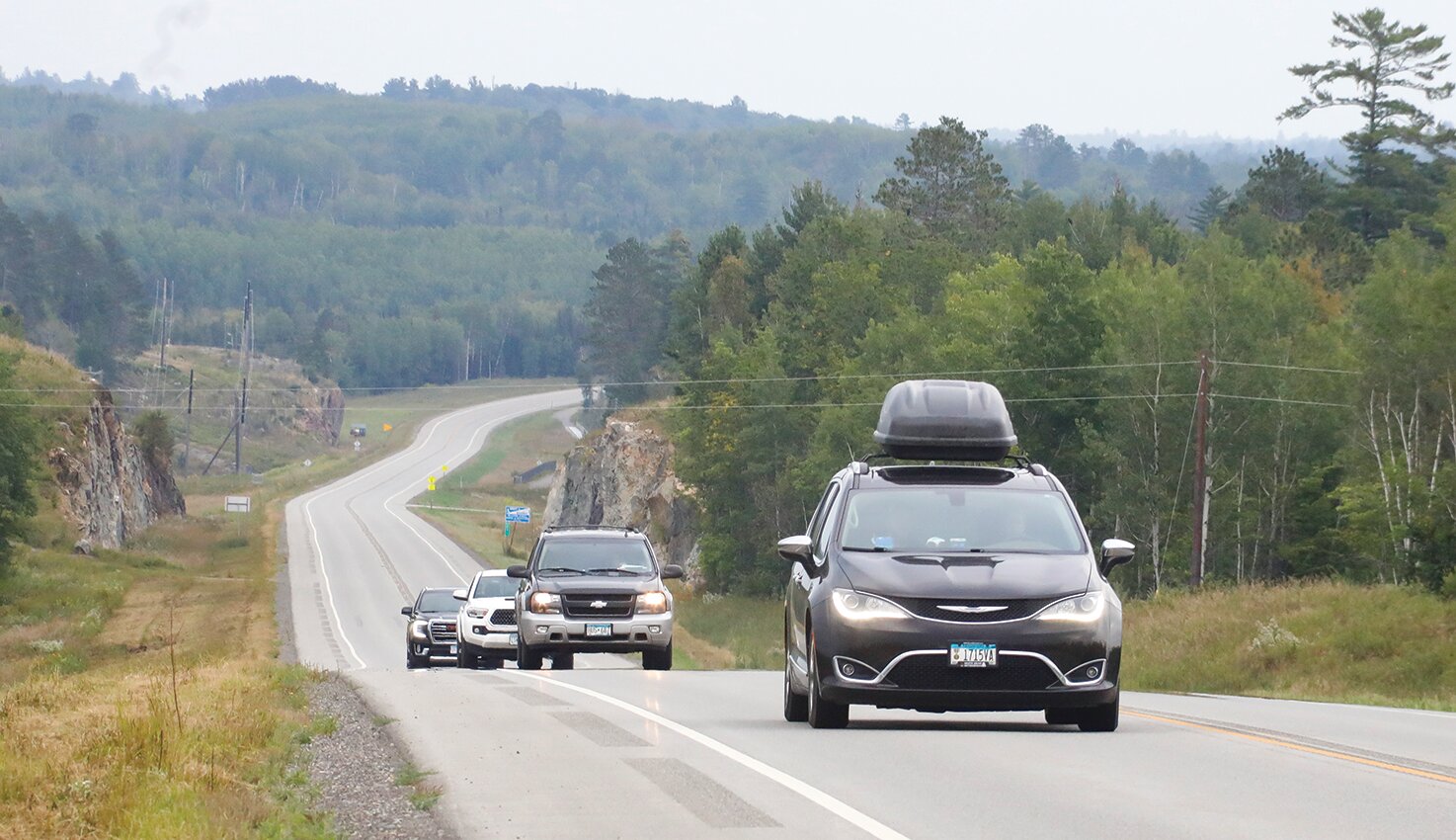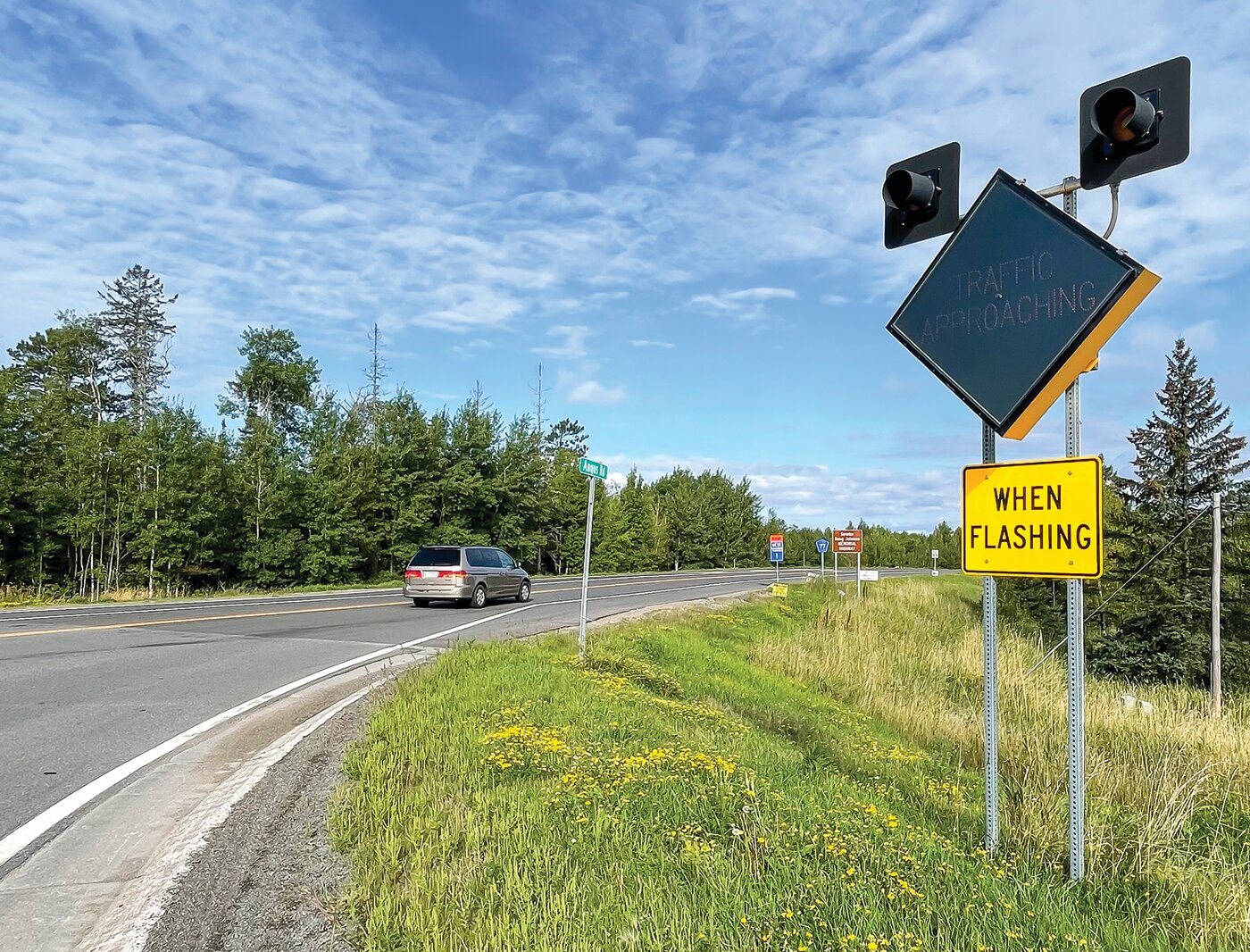Support the Timberjay by making a donation.
Data shows investment made Hwy. 169 safer
REGIONAL— Over the past 15 years, the Minnesota Department of Transportation has spent just over $23 million on safety improvements along the Hwy. 169 corridor from Ely to the intersection with Hwy. 53, just north of Virginia.
Those improvements, funded mostly by federal dollars with some state matching funds and largely directed by the Hwy. 169 Safety Improvement Task Force, have included everything from major realignments of the highway to added turn lanes, intersection lighting, wider shoulders, rumble stripes, and a variety of traffic controls near the crash-prone Y Store intersection.
Based on crash report data from before and after the initiative, obtained by the Timberjay, the impact of some of those changes has been uncertain, while other changes appear to have led to a significant reduction in crashes.
Across the entire 45-mile stretch of highway, law enforcement reported an average of 40 crashes of all kinds annually from 2005-2011, a period just before MnDOT implemented many of the safety improvements along the corridor. In the five years since the majority of the improvements were completed (2019-2023), the same stretch of highway experienced an average of 34 crashes per year, a 15-percent reduction in crashes.
Crashes involving suspected injury, however, appear largely unchanged since the improvements. According to MnDOT’s crash data, the corridor saw an average of five suspected injury crashes, both serious and minor, between 2005-2011, the period prior to most of the safety improvements along the corridor. That average declined slightly, to 4.8 injury crashes per year from 2019-23, a four-percent reduction, according to data provided by MnDOT.
Another category of crashes tracked by MnDOT, known as “possible injury crashes” appears to have improved more significantly, declining from an average of 11.1 annually from 2005-2011, to 4.4 annually since 2019.
Meanwhile, crashes involving property damage-only appear to have increased slightly, from an average of 22.5 annually from 2005-2011, to 23.8 on average from 2019-2023.
The crash results, as reported here, don’t correct for changes in traffic counts, which can also impact the number of crashes. Traffic safety engineers often refer to a crash “rate,” which accounts for differences in total vehicle traffic.
Based on MnDOT data, traffic counts are down slightly in recent years compared to the period immediately prior to the safety improvements, at least along segments analyzed by the Timberjay. Recent counts just south of the Y Store were down about seven percent from years prior to the improvements, while traffic between Soudan and Ely were down by five percent. Based on that data, it would be reasonable to expect a similar slight decline in crashes, with or without the safety improvements.
All of these data come with a caveat. Traffic counts are really estimates rather than definitive. The traffic counters are deployed for a 48-hour period at any one location every few years, notes Jim Miles, MnDOT’s district one traffic engineer, so they represent a snapshot in time. From those counts, MnDOT officials extrapolate based on several factors to obtain an estimate for an annual average count. Depending on the highway in question, traffic can be quite consistent, or highly seasonal in nature, which is the case with the Hwy. 169 corridor north of Virginia, where traffic counts are significantly higher in the summer.
Even crash reports are not definitive note MnDOT officials, since not all crashes result in a report. “They’re not the be all and end all,” said Miles.
Specific improvements
The effectiveness of any particular improvement, which may only affect an intersection or a thousand feet of highway is unlikely to show up clearly in a review of crash data from an entire 45-mile-long corridor. MnDOT officials, like Duane Hill, district engineer for MnDOT’s district one, which encompasses northeastern Minnesota, notes that crash data from those segments of the highway that saw the most significant improvements are a better gauge of the effectiveness of the improvements.
In some cases, the effectiveness of the change is readily apparent in the crash reports. Take the work done along the section known as 13 Hills, where MnDOT straightened a roughly 1.5 mile stretch of highway roughly between Wahlsten Rd. and the Pike River back in 2012. According to Miles, during a ten-year stretch from 2002-2011, that segment of roadway saw a total of 49 crashes, about 60 percent involving vehicles leaving the roadway.
In the ten years since that safety project was completed, that same segment has seen just eight crashes in total, said Miles.
“It appears that was a pretty successful fix,” he said.
The benefit of other specific improvements along the corridor are less certain.
The most significant project along the corridor, the six-mile realignment of the highway in Eagles Nest Township, has yet to show the kind of reductions in crashes experienced in the 13 Hills segment, at least according to crash reports. According to Miles, in the three years prior to the realignment (2014-2016), the six-mile segment saw a total of 13 crashes, including one with a serious injury and five with minor injuries. In the three years immediately following completion of the project, Miles reports that the same segment saw 13 crashes as well, although none resulted in a serious injury and only one resulted in a minor injury.
Yet Bill Erzar, the long-time head of the now-25-year-old Hwy. 169 Safety Improvement Task Force, said the crash reports may not capture the true impact of the realignment. He said many run-off-the-road accidents, particularly in winter, did not get reported in the past. “But I heard about them because people would call me,” he said. Erzar said the change has significantly improved safety along that stretch of highway, which used to be notorious for sharp curves, bad sight lines, and black ice in winter.
As a MnDOT engineer, Miles will continue to track the data he has available for the highway segment, imperfect as it may be. He said he prefers to have five years of crash reports for a comparison, rather than the three years he cited to the Timberjay. That means subsequent data should help to clarify whether the realignment provided the safety benefits that supporters see along the route.
It may be some time as well before MnDOT officials can declare a victory over one of the corridor’s most stubborn safety issues— the three-way intersection at the Y Store. “That’s been a problematic intersection for quite a lengthy period of time,” said Miles, who recently analyzed the long list of steps MnDOT has taken to address the dangers at the intersection. Those steps included additional lighting prior to 2000, followed by modifications in signage in 2004 and enhanced pavement markings for left turns in 2005. MnDOT added an offset right turn lane in 2006 and an intersection conflict warning system in 2014. “We had a run of bad crashes in the early 2000s,” recalls Miles, including fatal crashes in 2002, 2003, and 2004. “Since the 2014 improvement, we have had one serious injury crash and two injury crashes. Does that mean we’re all good? I don’t know. That intersection still concerns me,” he said, noting that the intersection saw a serious injury crash as recently as 2022.
When it comes to fatal crashes, Miles notes that the data isn’t always that useful. “The really difficult thing is that fatalities are pretty rare and pretty random,” he said. “You might not have another one at any given intersection for a hundred years.”
What’s more, Miles notes that fatal and severe injury crash rates have been on the decline for decades across the country, in part due to the many safety improvements mandated for vehicles sold in the U.S. market. “If you’re wearing a seat belt and in a newer car, you’ve got a pretty good chance,” he added.
Even so, Miles said he’s generally pleased with the results of the safety improvements along the corridor. “Generally speaking, I think the alignment is much better. “We have wider shoulders, we’ve added rumble stripes. We’ve addressed some of the worst of the winter shading. And the number of crashes has generally gone down.”
Erzar, who has been one of the strongest advocates for safety along the corridor, agrees. In addition to the Eagles Nest and 13 Hills realignments, Erzar cites the addition of 34 left or right turn lanes or bypass lanes. “We’ve also lighted 5-6 major intersections from Virginia to Winton,” he said.
And Erzar isn’t content to rest on his laurels. He said he maintains regular contact with Duane Hill to discuss further improvements. “We’re looking at the west end of Robinson Lake, where there have been some fatal crashes,” said Erzar. “It’s a very dangerous situation.”
He said they’re also discussing ways to address the curves and dip near Wolf Creek Pass. “We’re looking at raising the bottom of that dip, adding turn lanes, and cutting the hill a little bit,” he said.
But getting that work done could well prove challenging, given the current funding situation. Erzar noted that the federal gas tax hasn’t been increased since 1992 and that that’s made it more and more difficult to fund basic maintenance of federal highways, like Hwy. 169, much less address significant safety concerns. “There are chunks of the highway that aren’t even getting the mill and overlays that have been scheduled. They keep getting pushed back due to lack of funding,” he said.









